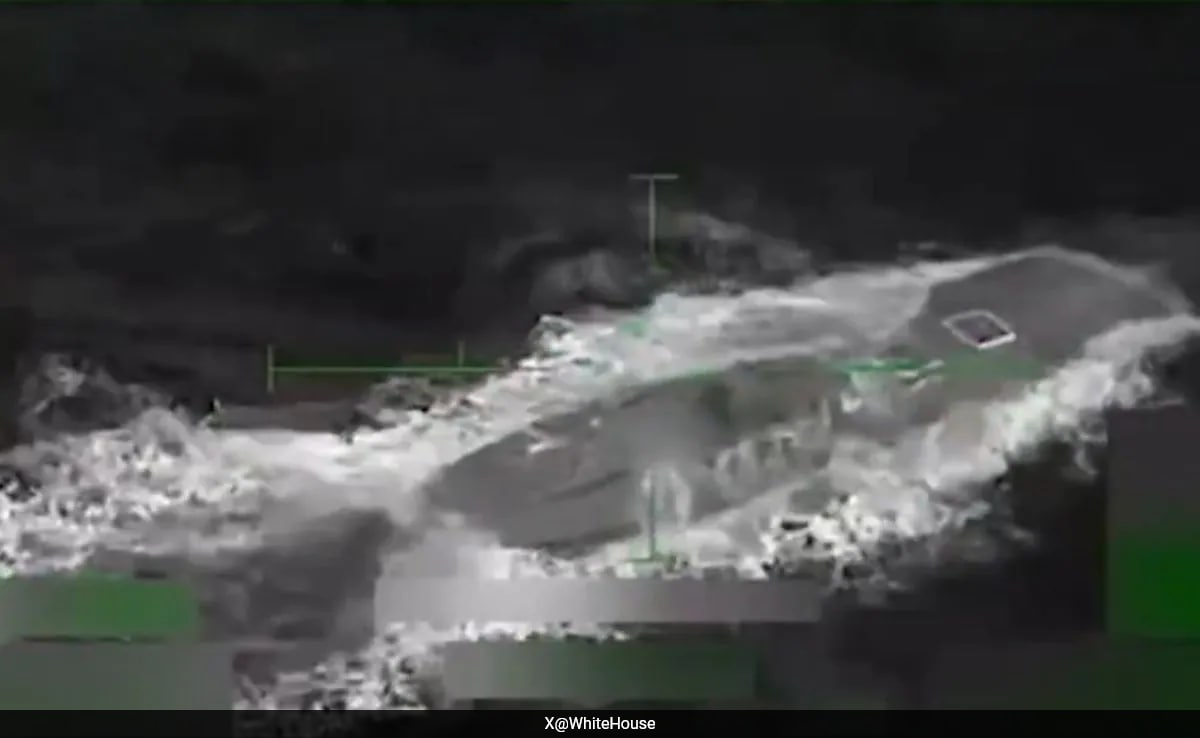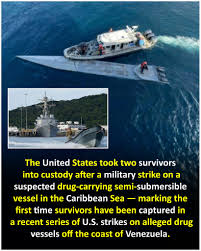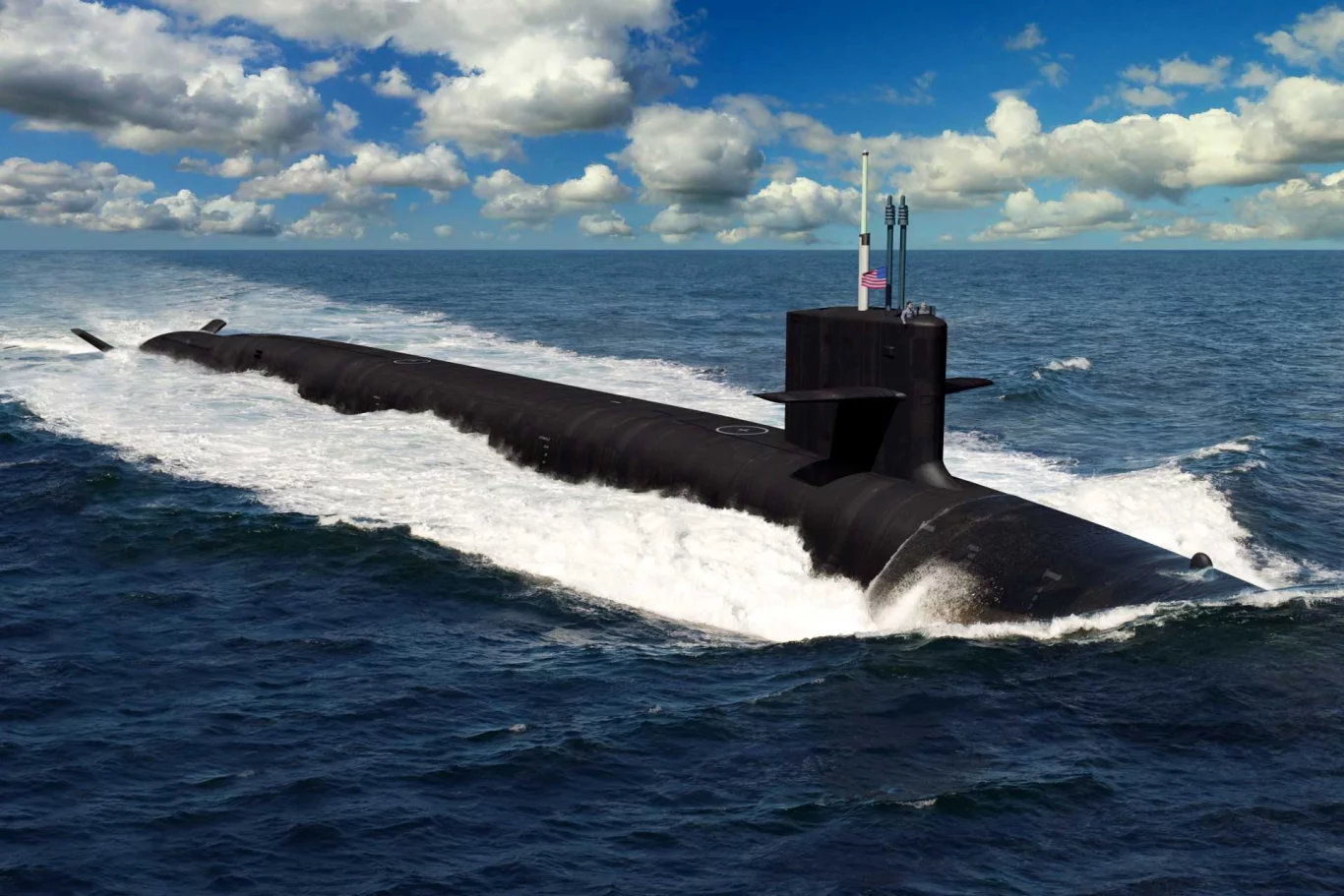In a dramatic escalation of the United States’ ongoing war against international drug trafficking, American forces executed a precision aerial strike on a suspected drug-carrying semi-submersible vessel in the vast waters of the Caribbean Sea. This high-stakes operation, captured in gripping footage shared by President Donald Trump on his Truth Social platform, underscores the relentless efforts of the U.S. military to disrupt narcotics smuggling routes that fuel addiction and violence across the Americas. The incident, which unfolded on October 18, 2025, not only destroyed the vessel but also led to the rescue and subsequent repatriation of two survivors, highlighting a multifaceted approach that combines lethal force with humanitarian considerations.

Debris from the destroyed drug-carrying semi-submersible after the U.S. strike.
The footage, released directly from the White House via Trump’s social media account, depicts a seamless sequence of events: advanced surveillance identifying the low-profile craft, a pinpoint strike from above that cripples the vessel, and a swift helicopter extraction of the survivors who were then transferred to a nearby U.S. Navy ship for processing. While the exact type of aircraft or munition used remains classified, experts speculate it could involve platforms like the MQ-9 Reaper drone, equipped with maritime surveillance capabilities including electro-optical/infrared sensors and surface-search radar. These unmanned aerial vehicles have become staples in U.S. counter-narcotics operations, allowing for persistent monitoring of elusive targets in open waters without risking pilot lives.
Semi-submersibles, often dubbed “narco subs” by law enforcement, are ingeniously designed vessels crafted by drug cartels to evade detection. These diesel-powered crafts, typically hand-built in remote jungle shipyards in countries like Colombia and Ecuador, feature minimal freeboard to reduce radar signatures and can carry multi-ton payloads of cocaine or other illicit substances.

A typical narco semi-submersible intercepted by U.S. forces, showcasing its low-profile design.
With crews of just two to four individuals, limited communications equipment, and modest speeds, they navigate predictable routes from South American coasts toward distribution points in Central America or the U.S. Their fragility, however, makes them vulnerable once spotted – a single well-placed strike can disable propulsion or breach the hull, sending the cargo to the ocean floor.
In this particular engagement, the strike appears to have been executed with munitions optimized for small-boat interdictions, such as the AGM-114 Hellfire missile or the lighter AGM-176 Griffin, both known for their precision and low collateral damage. These weapons allow operators to target specific areas like the engine compartment or crew quarters, minimizing risks to nearby vessels or the environment. Following the impact, U.S. military helicopters – possibly SH-60 Seahawks from a nearby cruiser like the Ticonderoga-class – swooped in to rescue the two survivors, who were clinging to the sinking wreckage. This rapid response not only saved lives but also enabled the collection of valuable intelligence, including navigational data and potential evidence linking the operation to larger trafficking networks.
President Trump, in his characteristic forthright style, hailed the operation as a major victory in the fight against drugs, claiming that each such strike prevents thousands of overdose deaths in the United States. Specifically, he asserted that destroying this vessel alone could save up to 25,000 American lives by keeping a massive shipment of narcotics off the streets. However, fact-checkers and experts have scrutinized these figures, noting that while interdictions do disrupt supply chains, the direct correlation to saved lives is complex and often overstated. Drug policy analysts point out that cartel adaptability – shifting to alternative routes or methods – means that single operations, while impactful, are part of a broader, ongoing battle rather than definitive wins.
The survivors, identified as nationals from Ecuador and Colombia, were initially taken into U.S. custody aboard the Navy vessel involved in the operation.

U.S. Navy personnel securing a similar intercepted vessel in the Caribbean.
In a move that avoids prolonged detention and potential legal complications, the U.S. military has decided to repatriate them to their home countries rather than hold them in a POW-style facility. This decision, announced by Trump during a press briefing, reflects a pragmatic approach to international relations, allowing local authorities in Ecuador and Colombia to handle prosecutions while maintaining diplomatic goodwill. It’s worth noting that this marks the first instance where survivors of such a strike have been captured alive, providing a unique opportunity for debriefings that could yield insights into cartel operations.
This strike is not an isolated event but part of a larger U.S. posture in the region, particularly around Venezuelan waters, where smuggling networks are believed to enjoy some level of state protection. In recent weeks, the Pentagon has deployed assets including guided-missile destroyers, F-35 stealth fighters, and even a nuclear-powered submarine to bolster presence and deterrence. Long-range B-52 bomber missions have also flown offshore, signaling Washington’s resolve to counter Venezuelan-linked trafficking pipelines that convert cocaine into regime funds. These efforts come amid heightened tensions, with Trump accusing Colombian leadership of complicity in the drug trade and even threatening to cut aid to the country.
The broader context of U.S. counter-narcotics strategy in the Caribbean dates back decades, evolving from simple patrols to integrated operations involving intelligence-sharing with regional partners. The use of lethal force at sea, while controversial, is justified under international law when vessels pose a clear threat and refuse to comply with interdiction attempts. Critics, however, argue that such actions risk escalation and civilian casualties, as evidenced by a recent incident where a fisherman was allegedly killed during a similar operation. Proponents counter that the human cost of inaction – with opioid overdoses claiming tens of thousands of lives annually in the U.S. – far outweighs these risks.
As the video circulates widely on social media, it serves as both a propaganda tool for the administration and a stark warning to traffickers: the U.S. is watching, and strikes can come from anywhere, at any time. With multiple interdictions reported in the past month alone, including lethal engagements and cocaine recoveries by allied forces, the pressure on smuggling networks is intensifying. Whether this leads to a sustainable reduction in drug flows or merely forces cartels to innovate further remains to be seen, but for now, this operation stands as a testament to the high-tech, high-risk world of maritime counter-narcotics warfare




